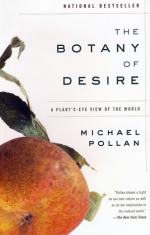
|
| Name: _________________________ | Period: ___________________ |
This quiz consists of 5 multiple choice and 5 short answer questions through Chapter 2.
Multiple Choice Questions
1. The process of trying to impersonate other plants or animals in order to attract or repel is called ______.
(a) Flattery.
(b) Tropism.
(c) Mimicry.
(d) Chemical signaling.
2. Teaching men how to ferment the juice of the grape, ______ had brought civilization the gift of wine.
(a) Venus.
(b) Apollo.
(c) Zeus.
(d) Dionysus.
3. Johnny Appleseed raised ______ for sale and subsequent transplantation.
(a) Apple cuttings.
(b) Apple seeds.
(c) Apple trees.
(d) Apple clones.
4. The book suggests that Herbert's view of tulipmania is a parable of utopianism, specifically _______.
(a) Communism.
(b) Socialism.
(c) Capitalism.
(d) Aparteid.
5. Since Appleseed raised his trees from seed, most of the fruit was not suitable for _______.
(a) Making cider.
(b) Composting.
(c) Eating.
(d) Selling.
Short Answer Questions
1. The book suggests that colors and symmetries are elemental principles of ______.
2. The domestic apple is thought to have derived from a species that originally came from the country ______.
3. Pollan asserts that due to the use of apple grafts from one generation to the next, the apple population has been made____.
4. ______ is the unit of money used in Holland. After 1635, the price of a bulb of Switzers went from 60 to 1500.
5. The number of leaves that are only a tulip are typically _______. With the "turban" top, this gives them the suggesting of a human body.
|
This section contains 214 words (approx. 1 page at 300 words per page) |

|




